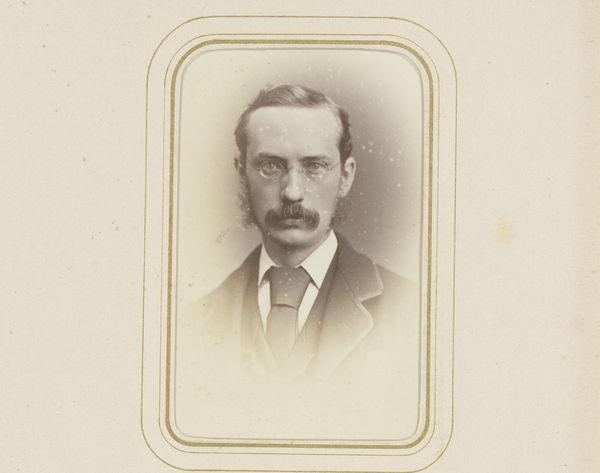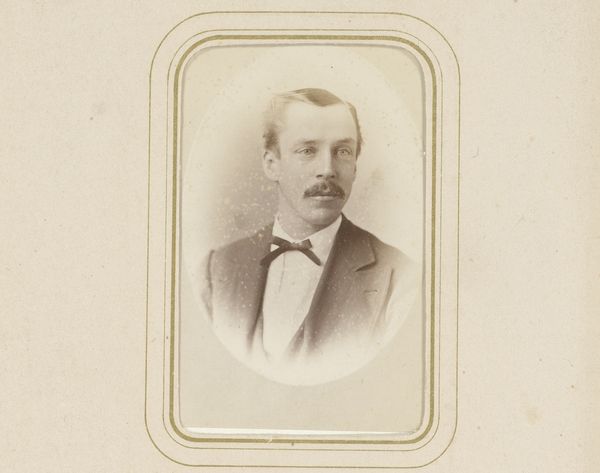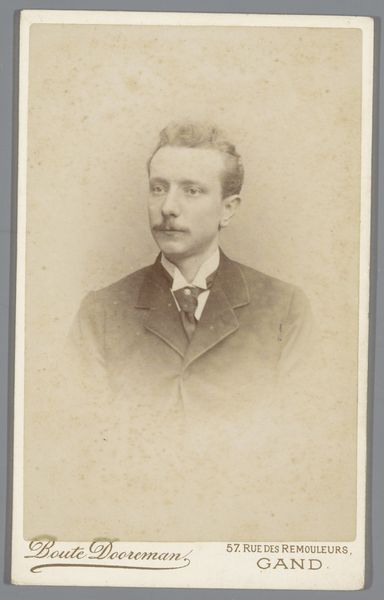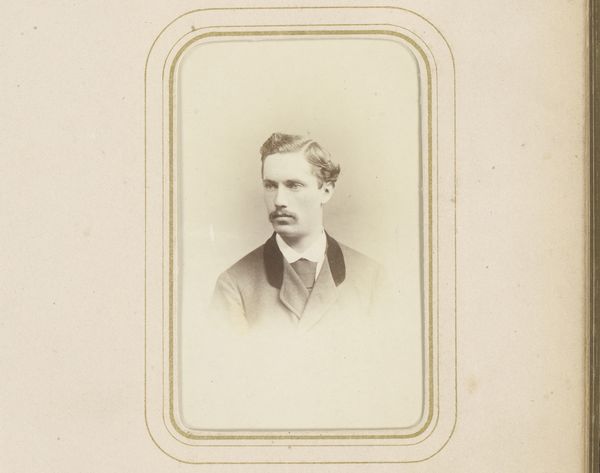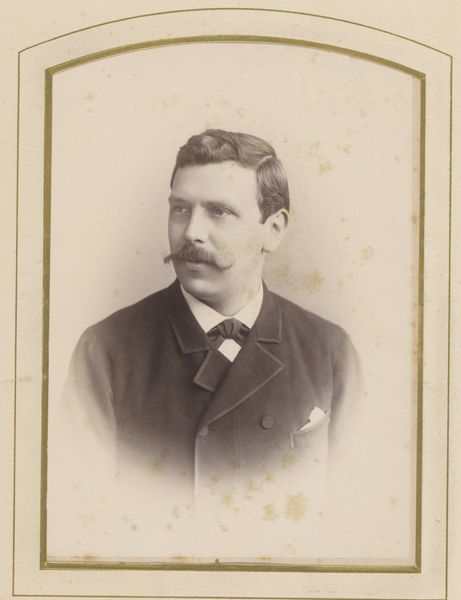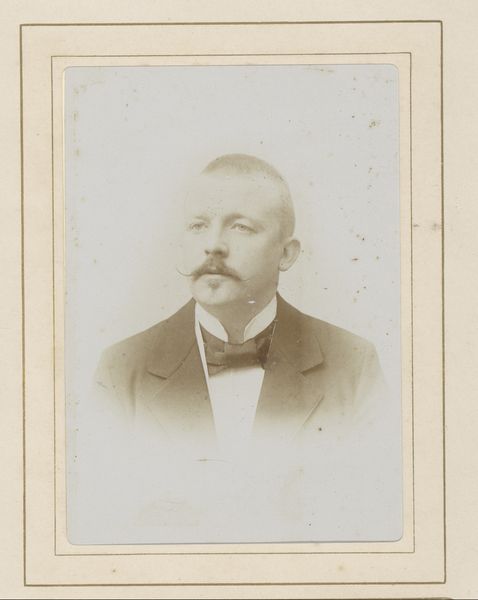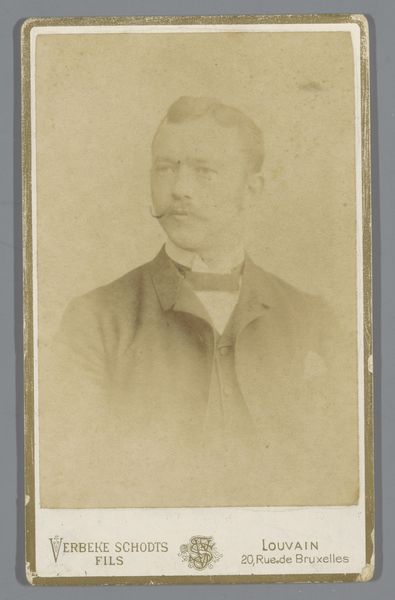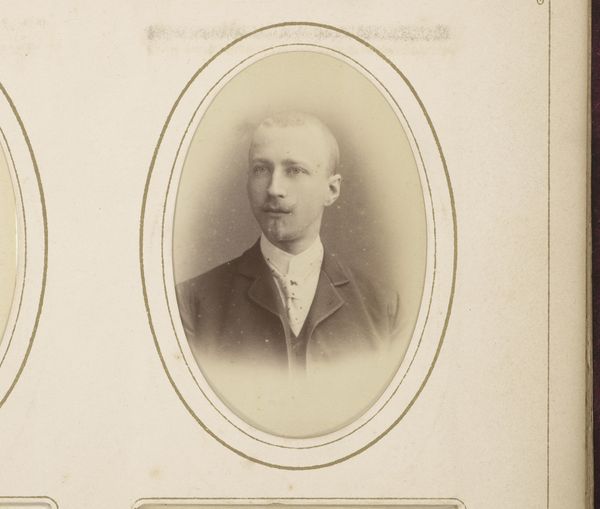
photography, gelatin-silver-print
#
portrait
#
pictorialism
#
photography
#
historical photography
#
gelatin-silver-print
Dimensions: height 136 mm, width 97 mm
Copyright: Rijks Museum: Open Domain
Curator: This is "Portret van een man," or "Portrait of a Man" by Harry John Dalby, created sometime between 1897 and 1901. It's a gelatin silver print, showcasing the style known as pictorialism. Editor: My immediate impression is one of serene formality. The subdued tonal range and soft focus lend it a kind of nostalgic dignity. Curator: Precisely. Dalby was clearly influenced by pictorialism's aims: elevating photography to the level of fine art by manipulating the image during development to emulate painting. Note how the soft focus nearly dissolves the background, drawing all attention to the subject's profile. Editor: I also detect a strategic placement of the man's face to occupy the upper space which creates a sort of symbolic hierarchy within the picture's arrangement, wouldn't you say? Perhaps suggesting social class or aspiration during that historical context? Curator: I see your point; however, that interpretation neglects the careful play of light and shadow, and its contributions to the visual texture. It’s an example of art for art's sake. To interpret social hierarchies into what could very well be artistic arrangements may prove an invalid thesis. Editor: Still, to ignore that photographs, especially portraits of this period, served specific social functions seems naive. The way one presented oneself, the careful attention to dress and bearing – these were deliberate acts of self-representation in a rapidly changing society. Curator: Indeed, the sitter’s formal attire – the jacket, the tie – signifies a certain social standing, yet the artistic composition transcends the sitter's mere identity, to become a study of form. We are asked to engage not with "who," but with "how." Editor: But even the ‘how’ is indicative of cultural norms and aesthetic preferences, wouldn't you concede? These conventions around how one should pose, the stylistic trends, even the artistic preference are always produced by society and cultural conditions. Curator: Perhaps, but that's where we differ in our lenses. For me, this photograph presents as an achievement in visual expression. The soft gradation and compositional balance precede your socio-cultural narratives. Editor: Maybe so. But I appreciate understanding how an image, so formally constructed, functioned within and reflected the specific cultural milieu of its time. Curator: And I admire how such a work uses subtle arrangements to generate pure artistic beauty through the image itself. Editor: Ultimately, both perspectives offer a richer understanding of Dalby’s evocative portrait.
Comments
No comments
Be the first to comment and join the conversation on the ultimate creative platform.

